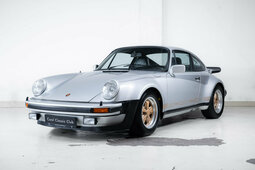New York's yellow taxicabs are probably one of the most recognisable objects of urban culture in the world. And the most interesting thing is that for almost half a century, it was not cars made by the Big Three that dominated in the megalopolis, but rather – ones made by a niche taxicab company named Checker.
Yet Checker's success in New York was not accidental. They were leaders in the taxi segment as far back as the 1920s, and even contributed to the chequered pattern becoming popular among taxicabs. All Checker taxicabs were marked with the chequerboard print that eventually became the company's permanent trademark.
In 1958, the iconic Checker A9 was introduced, becoming a symbol of New York City well into the 21st century. The famous Checker A9 was largely based on the 1956 A8, with the main difference being the dual headlights. Though it appeared ordinary from the exterior – resembling a typical car of that time – the Checker A9 offered some enticing advantages on the inside. The two extra seats allowed for up to five passengers in the back, while the completely flat floor and high, wide doors made entering and exiting the vehicle a breeze. Despite its spaciousness for passengers, the Checker A9 taxi was a mid-sized car, with a 120-inch wheelbase and a total length of 199.5 inches, making it easy to navigate through New York's streets. Moreover, Checker emphasized aspects other car manufacturers tended to overlook: low maintenance costs and a guarantee of the car's durability, even after 200,000 miles. These features ensured that the taxi created by the small Checker Motors Corporation became the most desired vehicle among NYC taxi drivers in the 1960s.
Checker ventured beyond the taxi market by launching the Marathon and the Superba – two cars derived from the A9, designed for the consumer market. A station wagon version was also introduced, targeting the general public, but neither the sedan nor the wagon achieved success among typical drivers. As it turned out, the attributes highly valued by NYC cab drivers did not hold the same appeal for ordinary consumers. Consequently, only a small portion of Checkers that hit the streets each year were standard passenger vehicles. For instance, in 1963, out of 7,080 Checkers sold, only 1,080 were not taxis. However, the company remained unfazed by this outcome, as they were profitable annually and continued to focus on the taxi sector, where they held a commanding presence.
In addition to the regular A9 4-door cab, an elongated limousine emerged, as well as the highly distinctive 6-door (9-passenger) and 8-door (12-passenger) variants of the Aerobus. Until the 1970s, Checker manufactured 6,000-8,000 vehicles annually, adequately fulfilling taxi requirements and leaving some for other specialized clients, like police or ambulance services in specific locations. Nevertheless, the circumstances started to shift in the 1970s.
First of all, Checker's design and concept was already quite outdated, and second of all, the big manufacturers decided to offer their products to the NYC taxi market after years of turning a blind eye. The Dodge Coronet, the Chevrolet Caprice, the Ford Crown Victoria and even the Peugeot 504/505 diesel drastically reduced the demand for Checker cabs. Checker tried to change, offering various improvements and more economical engines (even including diesel), but the reserves for improving the car reminiscent of the 1950s had already been exhausted. And the small company did not have the funds to develop a completely new model. Demand fell drastically in the 1980s and the last Checker was produced in 1982. True, they remained in the NYC taxi service until 1999 when the last Checker – after 21 years of daily work, three new engines, and nearly a million miles driven – was retired and auctioned off.
No other car could symbolise New York City's streetscape in the second half of the 20th century so well. You can find a Checker taxicab in just about any movie about New York during that era, from Breakfast at Tiffany's to Home Alone 2: Lost in New York. Not to mention Taxi Driver with Robert De Niro, who worked behind the wheel of a Checker as a taxi driver in New York to better prepare for the role. These days, the Checker is an extremely rare car. Not surprisingly, many cabs were sent to the scrapyard after long years of service, and very few of the passenger (non-fleet) Checkers have been sold. Given the rarity of the Checker, the USD 10,000–15,000 that a Superba or a Marathon now cost is probably a very fair price.
---
Discover your dream car within our Car Categories, or explore our Classic Passion Shop to uncover thrilling items from our associates!


















